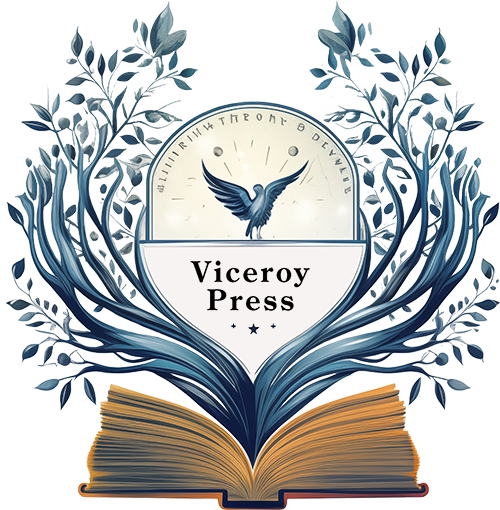
Book Ten
Rapture’s Dawn
-
Before you get to writing one of the books in Doom Hunter, take the time to absorb the information on writing style here.
-
Learn the process for submitting your story.
-
Doom Hunter Overview Page Link
All writers, please go here to familiarize yourselves with the main storyline and feel for the series.
-
All writers, please use this resource to familiarize yourselves with the main characters throughout the series. Your individual book description has its own set of characters included within your book’s outline.
-
This area is a useful resource for Templar and doomsday/apocalyptic history. Feel free to copy and paste any of this information for use within your book.
-
Doom Hunter Book Outline Page Link
Go here to find your book’s outline and characters. Happy writing!
-
If you have any questions or need help, please email me directly with your questions, suggestions, comments, etc. My email address is paul@psaudio.com
Remember Sully’s Quest
Dr. Sarah "Sully" Sullivan's mission, central to her character and crucial for every writer crafting her story, is a relentless pursuit to uncover ancient doomsday prophecies that she believes hold the key to preventing a modern Armageddon.
As a distinguished professor of Archaeology at Tufts University and an expert in symbology, and she and her father William’s revelation of the long-forgotten Prophecy of Templar Mystic, Bernard of Clairvaux (see Prologue and history section of this website), she is acutely aware of the dire warning signs in our current era: escalating climate catastrophes, emerging viral threats, the uncharted advancements in AI, and the ever-looming specter of war. Sully is convinced that the answers to these contemporary menaces lie hidden in the annals of the past. Her journey is not just an academic endeavor; it is a desperate, high-stakes quest driven by a deep-seated empathy and a commitment to knowledge.
Writers must consistently portray Sully as a character whose actions and decisions are fueled by this profound belief. Every twist in her story, every challenge she faces, must reflect her unwavering resolve to connect the forgotten wisdom of ancient civilizations with the pressing needs of the present, all in a bid to steer humanity away from the precipice of its own making and towards a path of enlightenment and preservation.
The Tricennial Nexus Cycle
In Book 9, Sully discovers the answers to her late father's notion he titled, The Tricennial Nexus Cycle. This posited that for some strange reason, natural and manmade disasters such as wars, famines, and disease were cyclical. They happened, on average, every 33 years. Why? It was/is Sully's job to find out before the next one occurs. What Sully finally uncovers (in Book 9) is an ancient codex and astrolabe that unravels the mysteries of the Tricennial Nexus Cycle. This cycle, as Sully uncovers, is primarily influenced by a comet, with ensuing ripple effects across historical, celestial, sociological, cultural, and religious domains.
The concept of the Tricennial Nexus Cycle, first proposed by Sully's late father, William the III, presents a compelling case for the interconnectedness of celestial events and earthly phenomena. Her discovery of the codex and astrolabe—ancient instruments of astronomical and navigational significance—provides key insights into the cycle's origins and effects.
Central to the hypothesis is the periodic return of a specific comet, Comet 55P/Tempel-Tuttle, the parent body of the Leonid meteor shower, which has an orbital period of about 33 years. Identified through the codex and astrolabe and recalled by Sully from her father's incessant believe that it might have been celestial born, this comet, with a 33-year orbital cycle, aligns with historical patterns of significant global events. Sully is now convinced that this celestial body's influence extends beyond mere observation, impacting Earth's environmental and sociological patterns of wars, political shifts, and societal transformations that seem to occur in sync with this 33-year celestial rhythm. The writings in the codex echo the theories of historians like Arnold J. Toynbee regarding cyclical patterns in human civilization and the sociological theories of Karl Mannheim, suggesting a generational cycle of approximately 33 years, marked by the emergence of new societal norms and ideologies.
The codex and astrolabe, adorned with symbols from various cultures, also points to the number 33's significance across different religious and cultural contexts. In Christianity, for instance, the age of Jesus Christ at his crucifixion is traditionally considered 33, a number symbolizing transformation and rebirth—a theme recurrent in the cycle.
Environmentally, Sully realizes the Pacific Decadal Oscillation's phases also align with the comet's cycle. These phases significantly impact global weather patterns, suggesting an environmental component to the Tricennial Nexus Cycle. As well.
Prologue
In the shadowed corners of an ancient library, veiled in the dust of centuries and heavy with the echoes of history, Dr. Sarah "Sully" Sullivan and her late father, William III, made a discovery that would irrevocably change their destinies. Nestled among neglected manuscripts was a curious artifact, as substantial as a tome of ancient lore, its facade etched with arcane symbols. At its center, the Ouroboros, a serpent ceaselessly chasing its own tail, coiled around the Tree of Life, its boughs and roots interlaced with cryptic runic messages. These inscriptions hinted at catastrophic events—earthquakes, deluges, infernos—mirroring the burgeoning calamities of their era.
Beneath this veneer, however, was concealed a truth even more profound. Employing the university's advanced electron microscope, Sully and her father unveiled the long-lost Prophecy of Bernard of Clairvaux, dating back to the 12th century. This prophecy unveiled a chilling foresight of the future, uncannily akin to contemporary predicaments. It envisioned a realm ravaged by social disintegration, ethical erosion, and ecological ruin. Bernard's visionary words depicted an era overwhelmed by "Towers of Babel"—metaphors for the burgeoning internet and swiftly evolving AI, emblematic of rampant urban sprawl and technological progress, heedless of nature's equilibrium. His prescient visions painted a portrait of humanity teetering on the edge, besieged by destitution, environmental decay, and substance dependency.
Yet, within Bernard's cryptic words lay a glimmer of hope — a suggestion of a hidden key to avert the looming apocalypse, a solution buried within the annals of time, waiting for those who knew where to look.
For Sully, this revelation was more than a scholarly triumph; it was a rude awakening. A chance to uncover the ancient secrets that could save civilization from the pending apocalypse.

